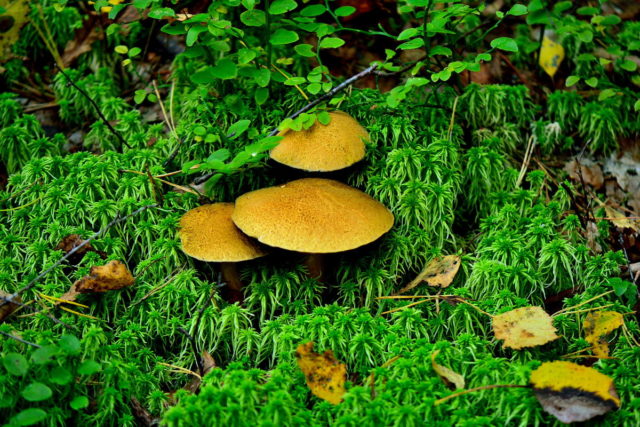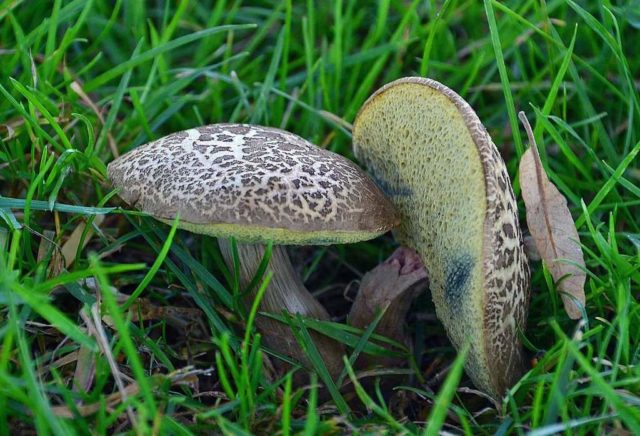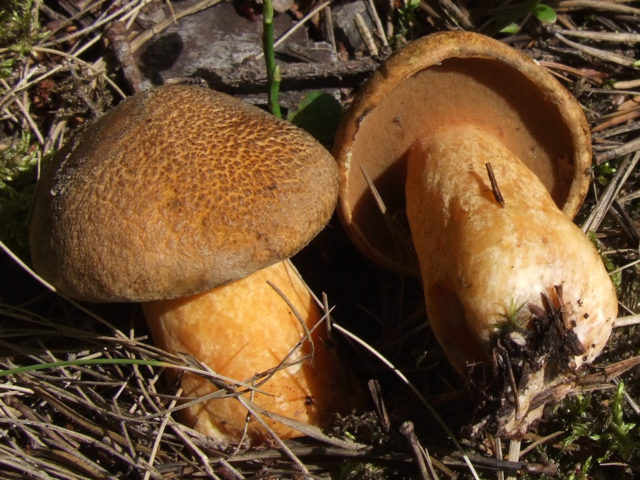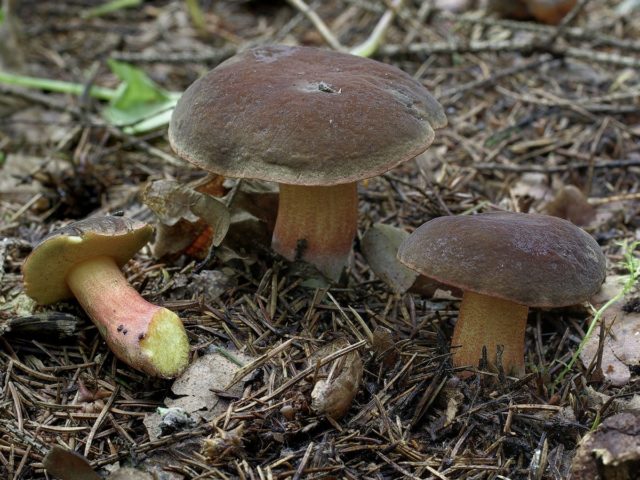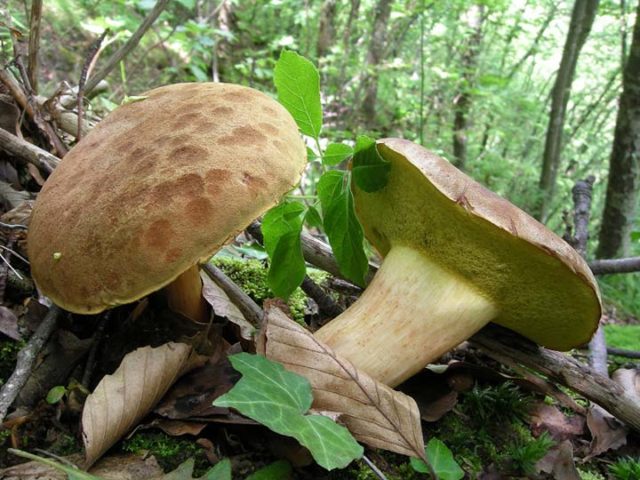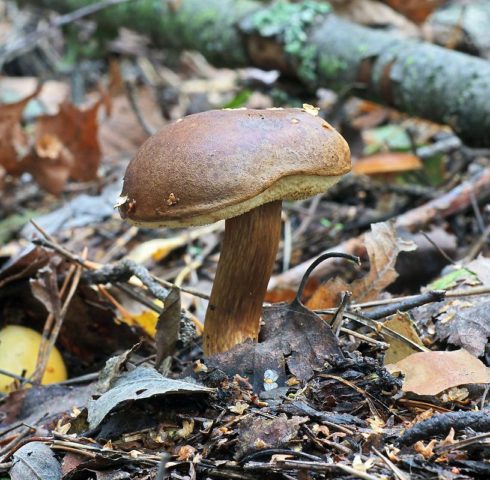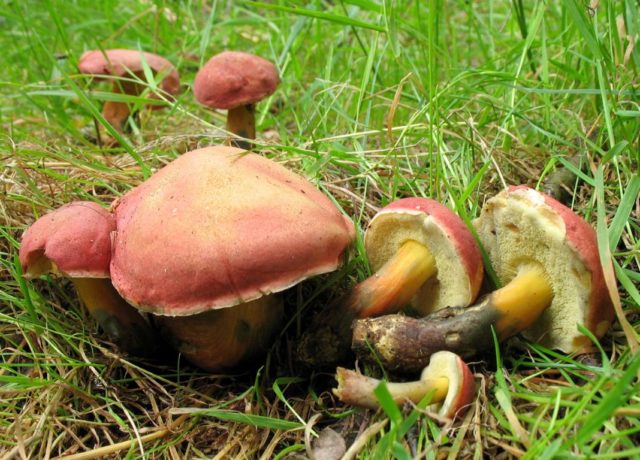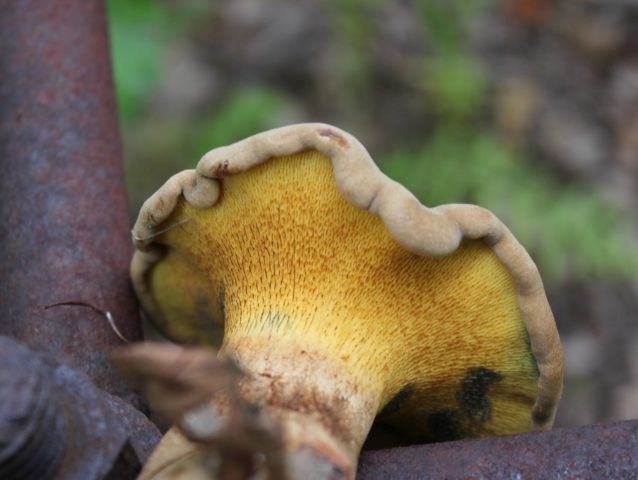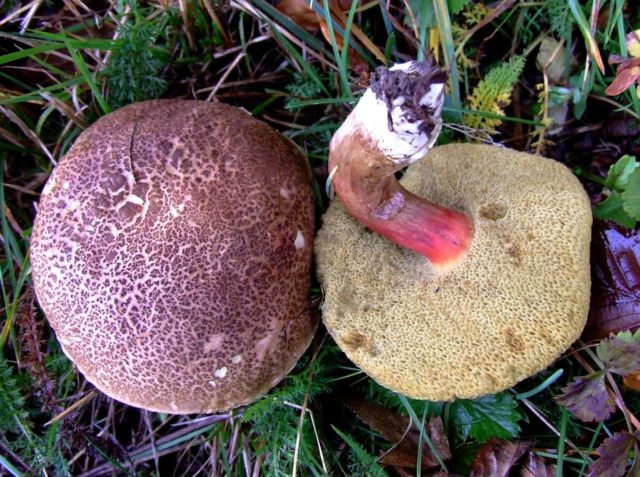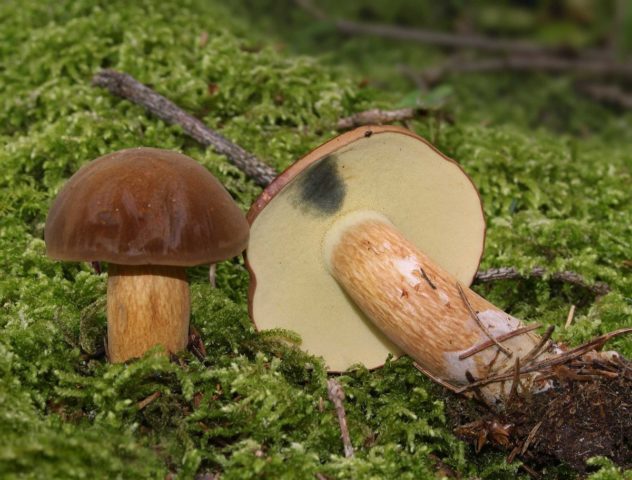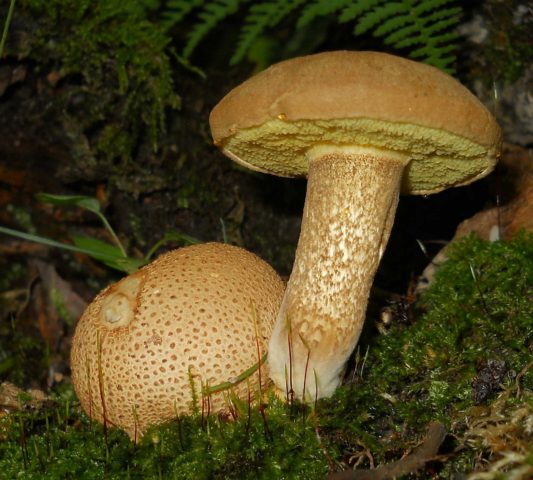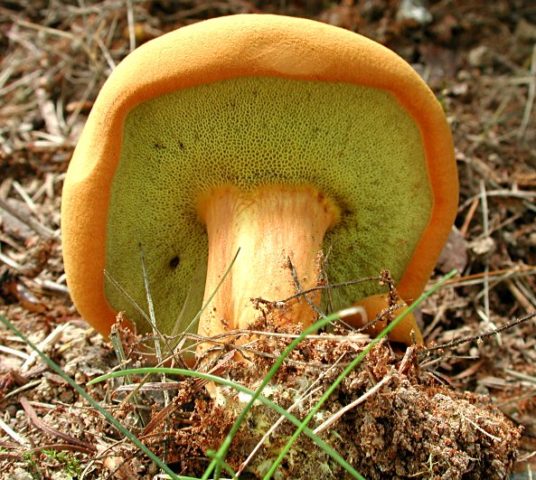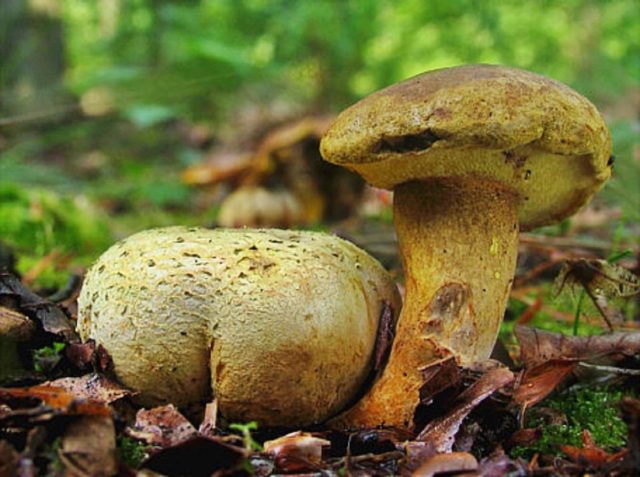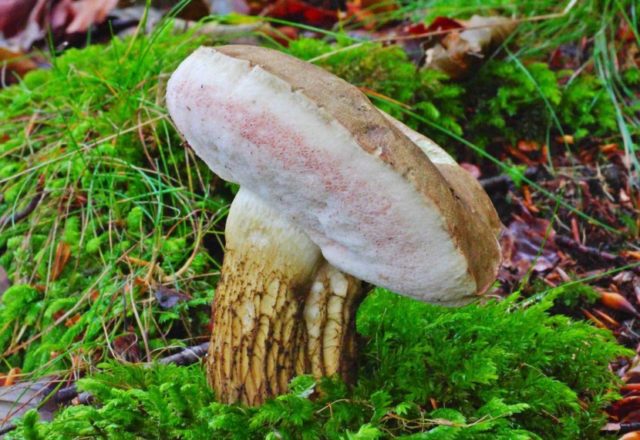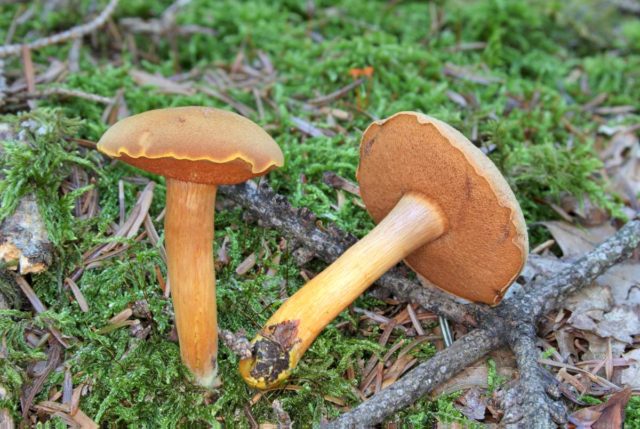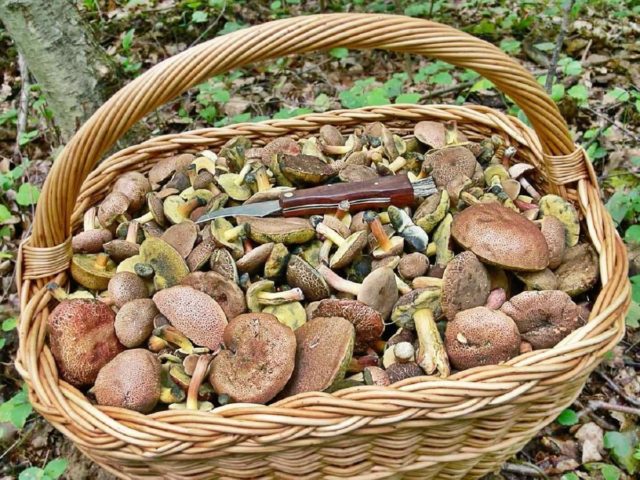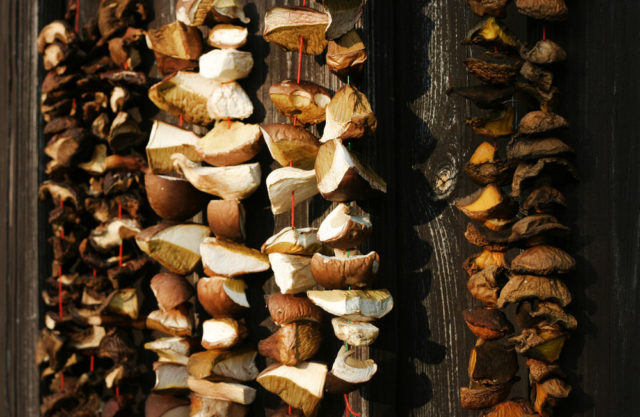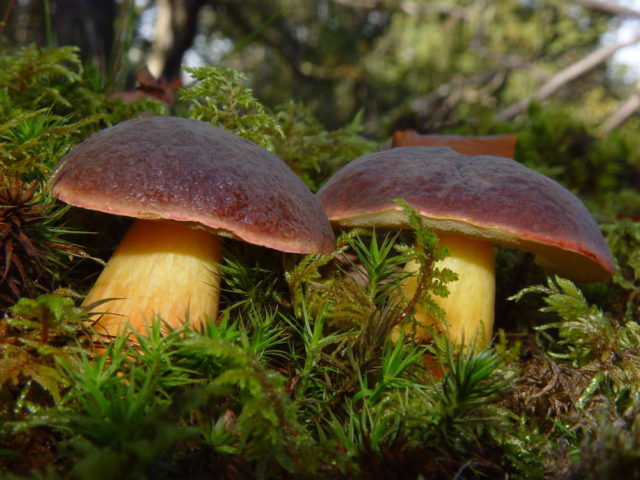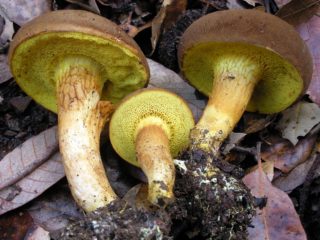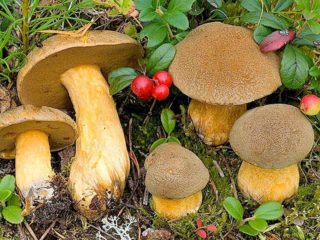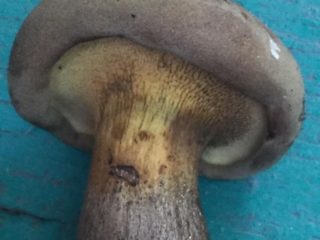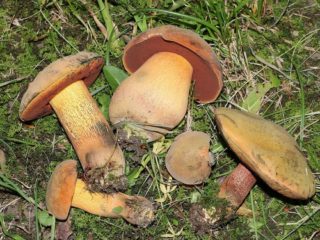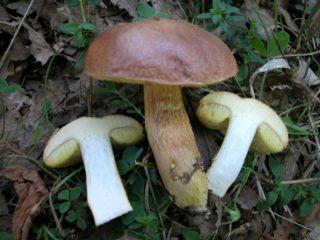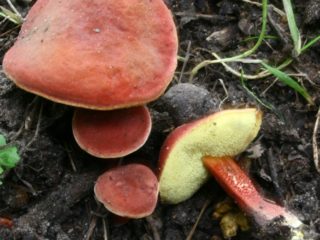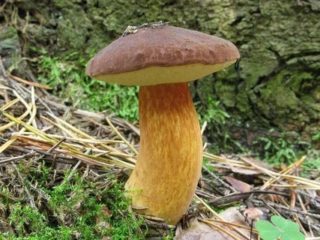Content
The moss is a typical representative of the extensive family of Boletovye mushrooms, which include boletus or boletus. Representatives of this family are especially loved by mushroom pickers, since there are no deadly poisonous among them. The only exception was the satanic mushroom, it really poses a health hazard if consumed raw. What does a flywheel mushroom look like, where to find it and how to avoid mistakes in its identification.
What mushrooms look like
All mushrooms, the photos and descriptions of which are given below, have similar signs. Their hat is pillow-shaped, hemispherical, velvety to the touch, and can be sticky and slippery in wet weather. Its diameter can be up to 12-15 cm. The color of the cap can vary from light brown with a golden tint to cognac. The color of the tubular layer changes with age from light orange to greenish brown. The leg is dense, even, may be slightly wrinkled, without a veil. It is usually yellow-brown in color. The flesh of the mushroom can have a yellowish or pinkish tint.
Where do mushrooms grow?
The moss got its name because it grows most often in moss. Its distribution area is quite wide. The flywheel is found in deciduous and mixed forests in both the Northern and Southern Hemispheres, it can even be found in the tundra. This fungus has become a soil saprophyte; some species can parasitize on plant debris or even on other fungi. The flywheel forms mycorrhiza with coniferous and deciduous trees, often found on old stumps or fallen trees.
Varieties of moss
Flywheels are quite similar to classic porcini mushrooms. Therefore, some mycologists even attribute them to boletus, but most scientists still consider these mushrooms to be a separate genus. Here are some varieties and photos of the flywheels that it includes:
- Porosporous. It has a convex pillow-shaped cap with a diameter of up to 8 cm. Its color is gray-brown, with numerous cracks forming a characteristic mesh. The pulp of the mushroom is dense, light, turns blue when pressed. Has a pronounced fruity aroma. Tubular lemon-colored layer. The growth period falls on June-September.
- Sandy (marsh, yellow-brown, variegated oiler). The hat is semicircular, with age it becomes pillow-like. The color of the young mushroom is orange-grayish, with age it changes to bright orange, sometimes darkening to ocher. With age, the surface of the cap cracks and becomes scaly. The leg is dense, cylindrical or club-shaped, thickened below. The pulp is dense, light, turns blue on the cut. Has a pronounced coniferous aroma. Usually grows in large groups in coniferous and mixed forests, from June to October.
- Velvet (waxy, frosty, matte). This species has a semicircular or cushion-shaped cap ranging in size from 4 to 12 cm. Its color varies from light brown to rich with a reddish tint. The skin of the cap is smooth, cracks can appear only in some mushrooms in adulthood. The tubular layer is olive or yellow-green. The leg is smooth, it can be up to 2 cm thick.It is yellow, sometimes with a reddish tint. The pulp is yellowish, dense, turns blue at the break. This species of moss grows mainly in deciduous forests with a predominance of oak, beech, hornbeam, and can also be found in conifers, where it forms mycorrhiza with spruce and pine. The period of active growth falls on August-September.
- Green. The most typical representative of the moss. It has a semicircular cap with a diameter of up to 15 cm. From above it is greenish-brown or olive-brown, velvety to the touch. The tubular layer is dark green, turns blue on the cut. The stem is light brown, dense, usually thickened on top. The pulp of the mushroom is loose, has the aroma of dried fruits. It is found in both deciduous and coniferous forests, along roadsides, often grows on anthills, old rotten wood. As a rule, it is found in single specimens, rarely in a group.
- Chestnut (brown, dark brown). The cap is olive-brown, grows up to 10 cm in diameter. In damp weather it darkens, becoming brown, often covered with a white bloom. Cracks appear on the skin with age. The leg is usually flat, cylindrical, and can bend with age. Has a brown or pinkish tint. The flesh of a young mushroom is dense, becomes loose with age. In case of mechanical damage, its color does not change, remaining cream, no characteristic blue discoloration is observed. The chestnut moss has a very wide range of growth; it is found in individual specimens or in large groups in mixed forests, forming mycorrhiza with spruce or birch. Active growth of the fungus is observed from July to October.
- Red (reddish, blushing). It got its name from the color of the cap, which can vary from pinkish purple to cherry or reddish brown. The size of the cap can reach 8 cm in diameter, the shape is cushion-like. The pulp is of medium density, yellow, turns blue when damaged. The leg is cylindrical, slightly thickened in the lower part, yellow, brown-red underneath. It grows in August-September, most often as single specimens in deciduous forests in well-lit areas: forest edges, old roads, glades.
- Larch. The mushroom strongly resembles a lamellar, but this resemblance is purely external. The cap can reach 20 cm in diameter, it is semicircular, with edges tucked inward, becoming flat-convex with age. Its color is dirty brown, the surface is dry, velvety to the touch. The tubular layer is thin, greenish yellow. The tubules go strongly to the stem, visually enhancing the resemblance to lamellar mushrooms. The pulp is light yellow, medium density, turns blue on the cut. The leg is thickened downwards, velvety to the touch, brownish. These mushrooms grow in August-September in mixed forests with the obligatory presence of larch. Found only in Russia, the main growing area - Siberia, Khabarovsk Territory, Far East, Sakhalin.
- Motley (yellow-meat, fissured). The size of the cap of this type of flyworm can reach 10 cm. It is semicircular, convex, slightly felt. The color is brown or brown, in places of numerous small cracks and along the edge of the cap is reddish. The tubular layer is pale yellow-green, turns green more strongly with age. The pulp is rather loose, yellowish, at the break it first turns blue, and then becomes reddish. The leg is cylindrical, solid, often curved, the color is red, turning into brown. When pressed, it quickly turns blue. It grows from July to October, mainly in deciduous forests. It is quite rare, does not form massive colonies.
- Chestnut (Polish, Pan mushroom). The hat is up to 20 cm in diameter, strongly convex, semicircular, becomes more voluminous with age and takes on a pillow-like shape. Color from light brown to chocolate and almost black. The skin of the cap is velvety, pleasant to the touch; in damp weather it can be slippery and shiny.The pulp is very dense, light yellow, with mechanical damage it turns a little blue, then turns brown, after which it brightens again. The leg is cylindrical, thickened below, light brown below and lighter above, dense. It is found in many regions of Russia, from the European part to the Far East. Usually grows in deciduous or mixed forests with the presence of spruce, less often pine.
Flywheel is an edible mushroom or not
Most mushrooms are classified as edible or conditionally edible mushrooms. The following types are classified as inedible:
- The flywheel is parasitic.
- Wood flywheel.
These species are not eaten due to their bitter or pungent taste.
Taste qualities of a flywheel mushroom
The taste of most species of mushrooms is well-pronounced, mushroom, in some species it is slightly sweetish. At the same time, fruity tones are clearly traced in the aroma.
Benefits and harm to the body
Fruiting bodies of the fungus contain many substances useful for human health. The pulp of the flywheel is rich in calcium and molybdenum, it contains vitamins PP, D. Mushrooms are considered a low-calorie food, while they are quite capable of replacing the protein of animal origin necessary for the body. Care should be taken to use these products for people with diseases of the gastrointestinal tract, as well as with liver disease.
How to distinguish false flywheels
It is quite difficult to confuse a flywheel with any mushroom. They do not have deadly poisonous counterparts, and this makes it much easier for mushroom pickers to recognize this species. Below are a few of the inedible species of mushrooms that can be mistaken for edibles.
- The flywheel is parasitic. The fruit bodies of this fungus are small and can be found on false raincoats. They grow, as a rule, in groups, while the size of the cap of the parasitic flyworm does not exceed 5 cm. It is semicircular, brownish-yellow, dense, velvety to the touch.
The stem of the fungus is thin, cylindrical, usually curved. Its color is yellow-brown, darker below. The parasitic flywheel is not poisonous, but it is not eaten due to its bad taste.
- Gall mushroom, or bitterness. The hat is semicircular, up to 15 cm in diameter, with age it becomes flatter and cushion-like. The skin is pleasant to the touch, velvety, in damp weather it becomes slippery and shiny. Its color is yellow-gray-brown. The tubular layer is pinkish; it turns red when pressed.
The leg is thick, cylindrical, can have a clavate shape with a thickening at the bottom. It is brown with a mesh pattern, darker at the bottom. It grows all summer and until mid-autumn in pine or mixed forests with a predominance of spruce. They do not eat it because of the bitter taste that does not disappear with any processing.Important! Worms never grow in the gall fungus. - Pepper mushroom (pepper oil). Outwardly, these mushrooms really look more like boletus than mushrooms. They have a semicircular convex cap, with age it becomes flatter, reaches a diameter of 7 cm. It is painted in red-brown color of various shades, often there is a yellow or orange border on the edge of the cap. The spore layer is brown or pinkish-brick in color. The pulp is yellow, loose.
The stem is cylindrical, rather thin, often curved. Its color is yellow, below it is brighter. On the cut, the pepper mushroom turns red. It is not poisonous, however, due to its pungent taste, it is almost never used in food. Some cooks use dried pepper mushroom powder instead of hot pepper.
Collection rules
Collecting mushrooms is quite simple, since the risk of taking a poisonous mushroom instead of an edible mushroom is quite insignificant. Similar inedible species are easily identified, so at home, when parsing and processing the gifts of the forest, they are easy to reject. Do not take mushrooms with worms, especially if you have a long way home.During the time until the harvest reaches the processing point, the worms will not only spoil the wormy mushroom even more, but also infect the neighboring ones.
Silent hunting is quite an exciting experience. Communication with the forest, with wildlife always has a positive effect on the body. Plus, picking mushrooms is a great way to diversify your menu. However, one must also remember that the fruiting bodies of fungi are capable of accumulating heavy metals and radionuclides in themselves. Therefore, you should not collect them in the immediate vicinity of the sources of these harmful substances: highways, industrial zones, railways. And also, you should not take mushrooms if there is no 100% confidence in their edibility and safety.
Use
The flywheel can be used for a wide variety of culinary purposes. It is fried, boiled, used in soups, salted and pickled, mushroom caviar and sauce are made from it, and pie filling. For the winter, they are often dried, however, unlike the porcini mushroom, the mushrooms turn black when dried, so the mushroom soup from them then turns out to be dark, albeit fragrant. Mushrooms can also be frozen.
Especially valuable in culinary terms is the Polish (Pansky) mushroom, which belongs to category 2 in terms of nutritional value. The rest of the flywheels belong to the 3rd and 4th categories.
A short video on how to pickle mushrooms:
Conclusion
Most mushroom pickers know perfectly well what a flywheel mushroom looks like, and are happy to take it into their basket. Beginners can be advised, if doubts arise, to consult with more experienced comrades. There is no need to be afraid to ask for advice in such a matter as picking mushrooms. It must be remembered that some species are deadly poisonous, although in the case of flywheels, the likelihood of this is very small.
